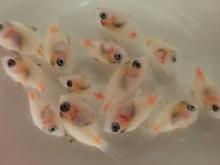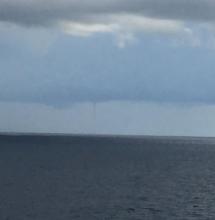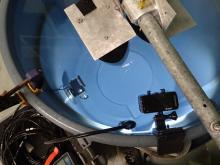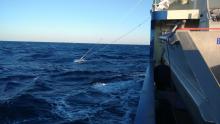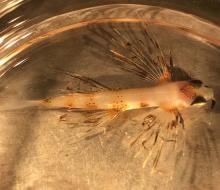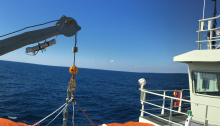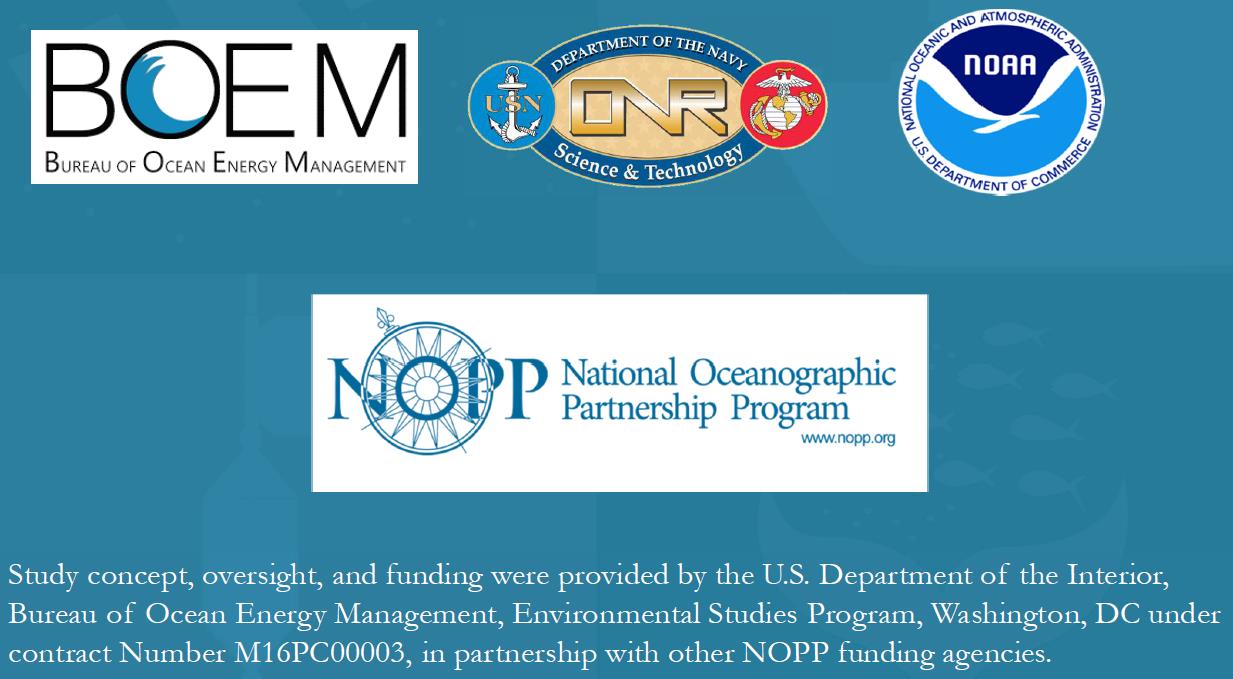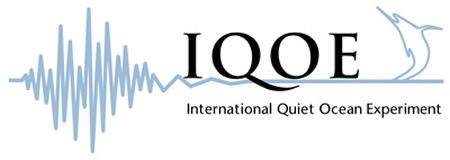Water spouts and stickers!
Finding "Ada"!
The "Triplewart Seadevil" is aptly named.
Searching for Deep Water!
Today's blog was written by ADEON lead PI, Jen Miksis-Olds. Yesterday we deployed bottom lander #5 on the Blake Plateau in approximately 900 m of water. The evening was spent doing net tows and fine scale acoustic surveys to get more information about the small marine life in the water. During daylight hours, the day watch rotates through 90 min marine mammal observation (MMO) shifts. The MMO shifts have been a disappointment the past 2-3 days.
"Trash Can CSI" or How do you determine the acoustic profile of a Squid?
SPIRITed Seas: Inferring sea surface roughness with a custom-built sensor package by Calder Robinson
Learn about FAU graduate student Sebastian Velez and the ADEON sister project DEEP SEARCH!
Today’s blog is written by Sebastian Velez, MS graduate student at Florida Atlantic University. It is exciting to have Sebastian out sailing with ADEON because 1) it is extra hands to work up samples, and 2) Sebastian is a bridge between ADEON and a related sister National Oceanographic Partnership Program project called DEEP SEARCH. You can learn more about >> DEEP SEARCH <<click here, or use #DeepSearch.
What a glorious day at sea!
Today's Blog is by Kevin Heaney, from OASIS, the science team’s ocean acoustics guy....
Today marks the completion of our first full week at sea. The weather's been great (sea-state 2, small waves, light wind for today) and the cooks keep providing fresh salads, two veggies, and two main courses PLUS dessert for each meal.
The night watch crew had quite the enjoyable Thanksgiving on the R/V Armstrong.
Blog post by Hannah Blair, Stony Brook University graduate student.
The night watch crew had quite the enjoyable Thanksgiving on the R/V Armstrong, from finding squid in our trawl net (one of my favorite animal groups!) in the early hours of the morning, to a giant buffet in the galley for Thanksgiving dinner – or for us, Thanksgiving breakfast.
Pagination
Copyright 2016 · All rights reserved

